Top 10 Most Beautiful Towns to Live or Retire in Canada
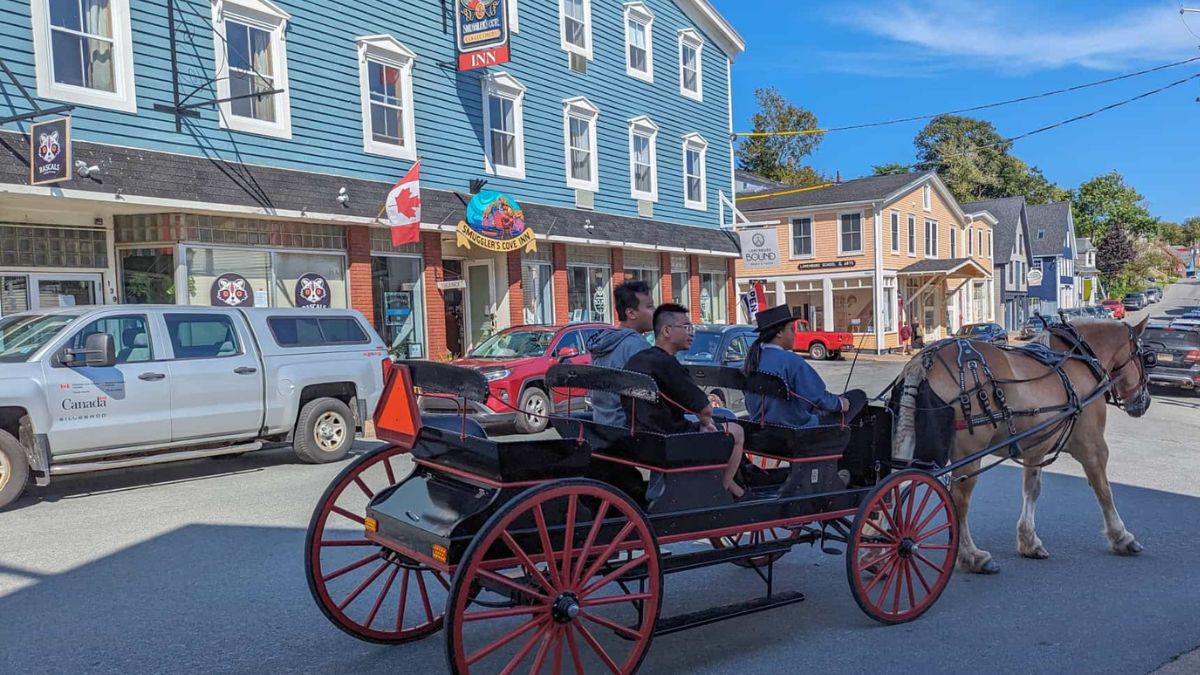
Top 10 Most Beautiful Towns to Live or Retire in Canada
Canada is renowned for its breathtaking landscapes, welcoming communities, and exceptional quality of life. Whether you're looking for a serene place to retire or a vibrant town to settle down, Canada offers an array of beautiful towns that perfectly blend natural beauty with modern amenities. From charming coastal villages to mountain havens, these towns provide unique lifestyles ideal for every taste. In this expanded article, we explore the 10 most beautiful towns in Canada to live or retire, showcasing their distinct appeal, housing market trends, demographics, and economic factors to help you find your perfect Canadian home.
Market Context and Demographic Trends
The COVID-19 pandemic has fundamentally reshaped Canadian migration patterns. Remote work opportunities and rising urban housing costs have prompted thousands of Canadians to relocate from major metropolitan areas to smaller communities. This "rural renaissance" has led to population growth in smaller towns across Canada, with rural and small town populations increasing in 10 of 13 provinces and territories from 2021 to 2024.
During the 2021-2022 period, over 270,000 people left Toronto, Peel, and York regions to move to other parts of Ontario, up from 150,000 in the previous five years. This migration trend extends beyond Ontario, with interprovincial migration patterns showing significant movement toward smaller communities offering better quality of life and housing affordability.
10. Collingwood, Ontario
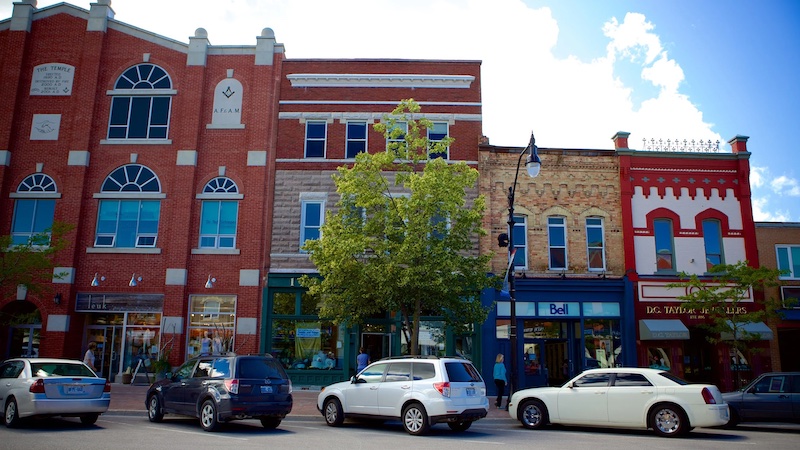
Average Home Price: CAD $820,000
Population: ~25,000
Nestled along the shores of Georgian Bay, Collingwood is a picturesque town known for its stunning waterfront views and year-round outdoor activities. With a vibrant arts scene, excellent dining options, and proximity to the famous Blue Mountain ski resort, it's a haven for both adventure seekers and those craving a relaxed small-town atmosphere.
Market Dynamics and Recent Trends
Collingwood's real estate market has shown remarkable resilience in 2024. The average home price reached approximately $810,142, representing a significant 10.6% increase from the previous year. Single-family homes, the most sought-after property type, command an average sale price of $887,461, experiencing a 3% year-over-year increase. Properties in Collingwood spend an average of 34 days on the market, indicating moderate competition among buyers.
The market has experienced substantial inventory growth, with 398 new listings added in the past 28 days - a significant increase compared to historical levels. This provides buyers with broader options while maintaining opportunities for sellers. The Collingwood market maintains a 96.2% sale-to-list price ratio, with homes selling in 56 days on average.
Community Appeal
Collingwood's well-established community and strong local economy make it an attractive destination for families and retirees alike. The town successfully balances tourism appeal with residential livability, offering four-season recreation including world-class skiing, hiking, and water sports. The community benefits from excellent healthcare facilities and cultural amenities that rival larger urban centers.
9. Lunenburg, Nova Scotia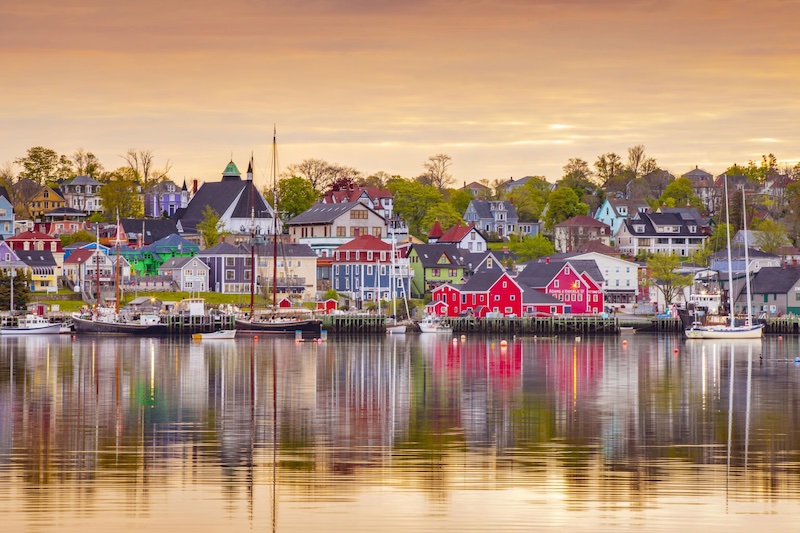
Average Home Price: CAD $420,000
Population: 2,396
A UNESCO World Heritage site, Lunenburg captivates visitors with its colorful waterfront and rich maritime history. This quaint town on Nova Scotia's south shore offers a tight-knit community, charming 18th-century architecture, and a thriving arts culture.
Demographics and Affordability
According to the 2021 Census, Lunenburg has experienced modest population growth of 5.9% from 2016 to 2021. The town boasts an impressive homeownership rate of 89.0%, significantly higher than the provincial average of 67.8%. The average dwelling value stands at $382,000, with average monthly shelter costs for owned dwellings at $1,106.
Economic Profile
Lunenburg's economy is heavily service-oriented, with an employment rate of 45.6% and unemployment rate of 14.4%. The average household income in 2020 was $84,200, with an after-tax income of $69,200. The cost of living in Lunenburg is 11% lower than the national average, making it particularly attractive for retirees.
Quality of Life Factors
Known for its friendly locals and peaceful coastal lifestyle, Lunenburg is ideal for those who appreciate heritage and seaside tranquility without sacrificing access to modern conveniences. The town's UNESCO designation ensures preservation of its historic character while supporting a thriving cultural and artistic community.
8. Mont-Tremblant, Quebec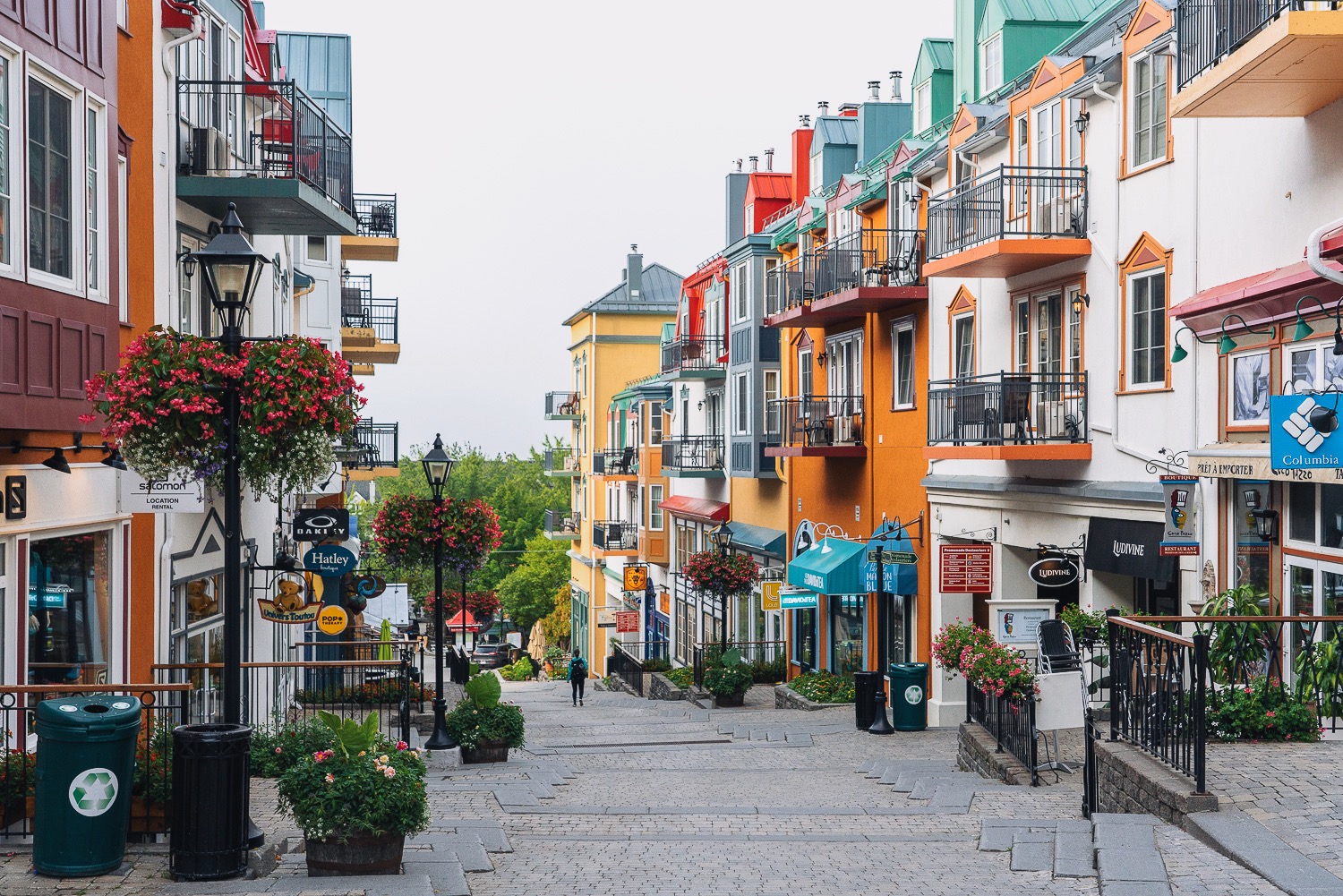
Average Home Price: CAD $620,000
Population: 10,992
Famous for its world-class ski resort, Mont-Tremblant combines natural beauty with vibrant village life. Set amidst the Laurentian Mountains, this town offers stunning scenery, outdoor activities year-round, and a lively cultural scene.
Population Growth and Demographics
Mont-Tremblant experienced robust population growth of 14.0% between 2016 and 2021, reaching 10,992 residents. The town has a significant senior population, with 28.5% of residents aged 65 and over and a median age of 53.6. This demographic profile indicates the town's strong appeal as a retirement destination.
Economic Vitality
The average total income among recipients in 2020 was $56,100, with after-tax income of $44,120. The average dwelling value is $454,800, making it more affordable than many comparable resort communities. Mont-Tremblant's economy benefits from year-round tourism, with the employment rate at 51.2%.
Lifestyle and Amenities
The pedestrian-friendly village features shops, restaurants, and festivals, making it perfect for active retirees and families looking for a dynamic yet peaceful community. The town's tourism infrastructure provides excellent dining, shopping, and cultural amenities typically found in much larger centers.
7. Elora, Ontario
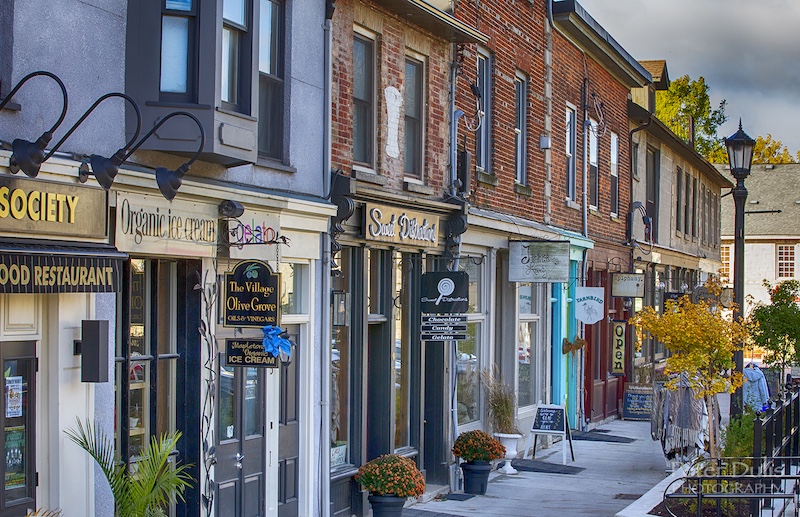
Average Home Price: CAD $720,000
Population: 7,868
Elora enchants with its historic downtown and stunning natural surroundings, including the Elora Gorge Conservation Area. The town blends heritage charm with a contemporary arts scene, featuring galleries, artisan shops, and festivals throughout the year.
Community Profile
Elora is part of Centre Wellington, and its population of 7,868 shows steady growth patterns. The community maintains a balanced age distribution with a median age of 44.1. The high marriage rate of 79% indicates strong family-oriented community values.
Economic Foundation
Elora's economy is largely based on tourism and the service industry, though it maintains agricultural and manufacturing roots. The town benefits from its proximity to larger centers like Waterloo and Guelph, providing easy access to urban employment while maintaining small-town charm. The cost of living remains reasonable, with the area offering good value for families and retirees.
Cultural and Natural Assets
With a welcoming community and easy access to larger cities like Waterloo and Guelph, Elora offers a peaceful, small-town lifestyle with urban conveniences close by. The famous Elora Gorge provides spectacular natural recreation opportunities, while the historic downtown hosts numerous festivals and cultural events throughout the year.
6. Canmore, Alberta
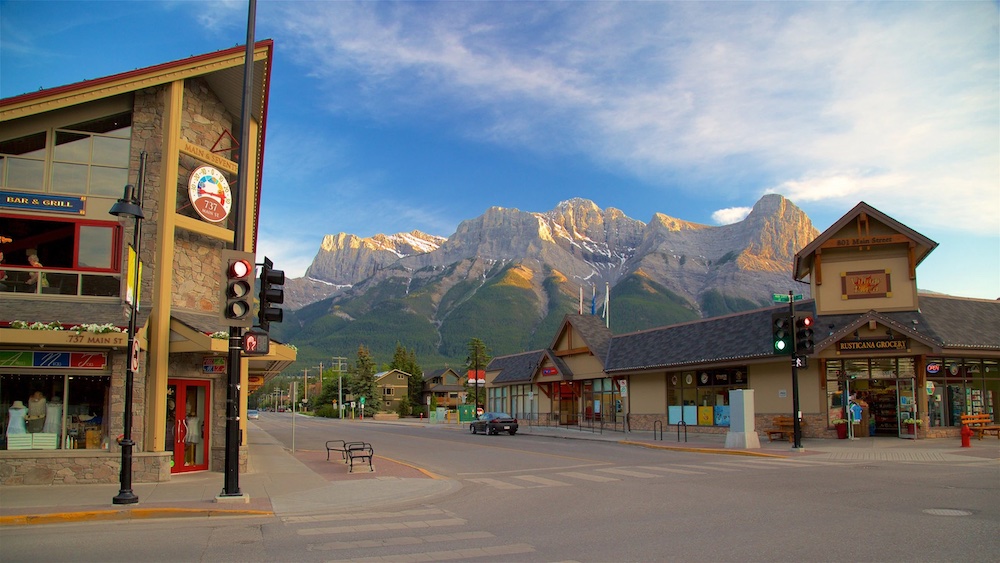
Average Home Price: CAD $950,000
Population: ~17,000
Situated in the heart of the Canadian Rockies, Canmore is a paradise for outdoor enthusiasts. Its breathtaking mountain views, hiking trails, and ski resorts make it a top choice for nature lovers.
Real Estate Market Dynamics
Canmore's real estate market has shown remarkable strength, with the average sale price reaching $1.14 million in 2024, representing an 8.5% year-over-year increase. The 2024 market saw 503 property sales at an average price per square foot of $813. Properties spend an average of 55 days on market for single-family homes and 48 days for condos and townhouses.
The recreational property market is particularly robust, with median single-family home prices at $1.67 million and standard condos at $765,000. Royal LePage projects continued price appreciation of 3.5% for 2025.
Demographics and Lifestyle
Over 30% of residents are aged 55 and up, making Canmore a popular destination for active retirees. The town maintains an impressive average household income of around $115,000 annually, reflecting the skilled professionals and successful entrepreneurs who call it home. Despite its proximity to Banff, Canmore maintains a friendly, laid-back vibe with a growing arts and food scene.
Investment Appeal
High-quality amenities and a strong sense of community make it a prime spot for those seeking both adventure and comfort. The short-term rental market remained robust in 2024, with 77 properties sold at an average price of $971,877. Canmore continues to attract active families, mature buyers, and retirees drawn to its small-town charm and world-class outdoor attractions.
5. Estrie, Quebec (Eastern Townships)
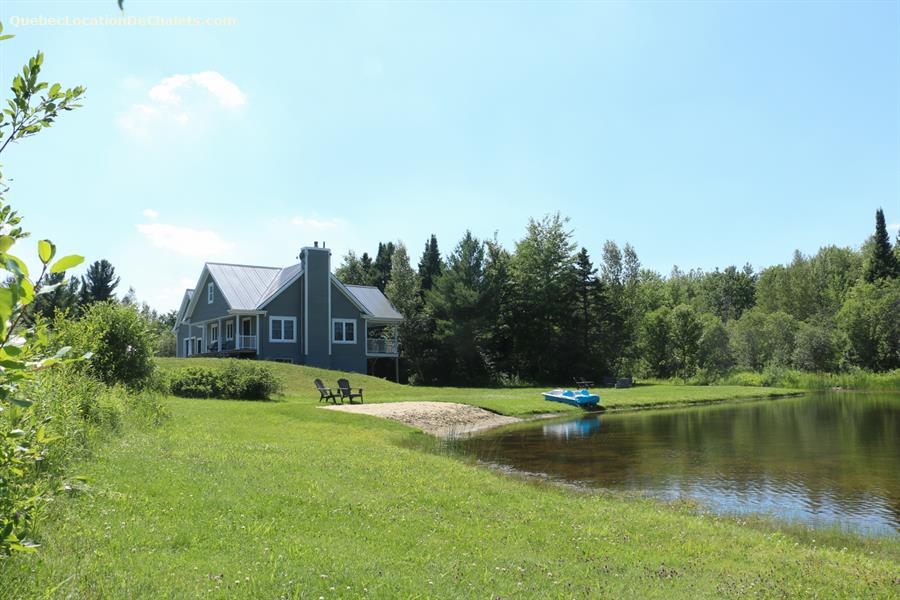
Average Home Price: CAD $400,000
Population: 679,934 (region)
The Estrie region, known as the Eastern Townships, offers rolling hills, charming villages, and fertile farmland. It's renowned for its wineries, gourmet food, and vibrant arts culture.
Regional Demographics and Economy
The Eastern Townships region encompasses 679,934 inhabitants, including 180,936 in Sherbrooke. The region is 33.4% rural compared to 19.1% for all of Quebec. However, the region faces demographic challenges with an aging population showing a replacement rate of 87% versus 96.6% in Quebec overall.
Economic Diversification
The economy features 1,115 manufacturing companies and more than 75 foreign-owned subsidiaries. Employment rates vary across the region: Estrie shows 57.2% employment with disposable income of $35,885, while some areas of Montérégie within the region show 64% employment with $38,172 disposable income.
Migration Trends and Appeal
Migrants from the Montreal area are the main reason for recent population growth in the region. Since the pandemic, this trend has been observed across all age groups, driven by proximity to city amenities while maintaining countryside access. The region offers dynamic job markets, vast green spaces, cultural activities, and gastronomic experiences.
Housing Affordability
Estrie's affordable housing and peaceful rural setting attract retirees and families wanting to escape urban stress while still enjoying cultural activities and outdoor recreation in a warm, welcoming environment. The average home price of $400,000 represents excellent value compared to major urban centers.
4. Charlottetown, Prince Edward Island

Average Home Price: CAD $350,000
Population: 38,809
As the birthplace of the Canadian Confederation, Charlottetown combines historic charm with lively cultural offerings. The town's waterfront, festivals, and culinary scene celebrate its rich heritage and island lifestyle.
Rapid Growth and Market Dynamics
Charlottetown is experiencing unprecedented growth as one of Canada's fastest-growing cities. The population is expected to grow from 40,000 to 66,000 by 2040. The average residential sale price increased by 2.8% year-over-year to $373,000 in 2024, while sales increased by 4.3%.
Housing Market Evolution
The benchmark housing price is $364,800, still less than a third of Toronto and Vancouver's prices. Nearly half of the properties are detached homes with yards. The newcomer wave has made Charlottetown's vacancy rates among the lowest in the country, but affordability remains attractive compared to major urban centers.
Cultural Transformation
The unprecedented influx of immigrants and urbanites has transformed the capital city with new talent, businesses, and cultural diversity. Classic seafood restaurants now compete with Vietnamese pho houses, Indian bakeries, and Lebanese vegan cuisine. The city maintains its historic charm while embracing modern multicultural influences.
With affordable housing, friendly neighborhoods, and access to beautiful beaches, Charlottetown is an excellent choice for those seeking a relaxed yet engaging community on Canada's smallest province.
3. Tobermory, Ontario
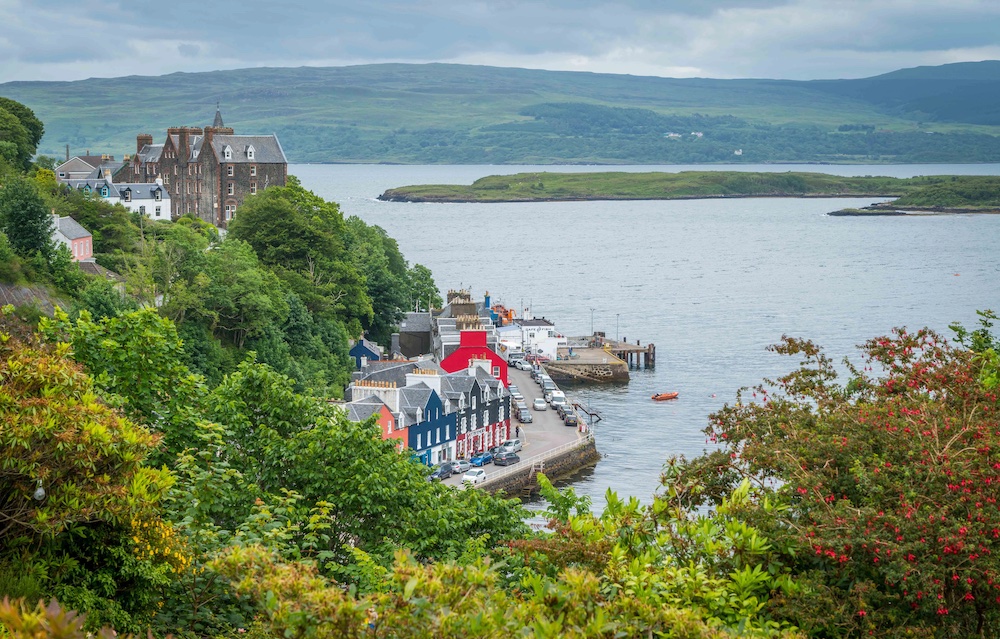
Average Home Price: CAD $530,000
Population: ~1,400
Known for its crystal-clear waters and proximity to the stunning Bruce Peninsula National Park, Tobermory is a nature lover's dream. This small town offers a peaceful coastal lifestyle with opportunities for boating, hiking, and scuba diving.
Tourism Economy and Demographics
Tobermory has a permanent resident population of nearly 1,000 people, but this increases to more than 13,000, including seasonal residents. The community attracts approximately 750,000 visitors to its two national parks annually. Due to numerous shipwrecks in surrounding waters, the town is internationally recognized as the "freshwater SCUBA diving capital of the world."
Economic Structure
The economy is primarily seasonal and tourism-based, with many businesses operating from May until Thanksgiving weekend in October. In 2018, Bruce County (which includes Tobermory) welcomed 2.5 million visitors with $299 million in overall visitor spending. This creates both opportunities and challenges for year-round residents.
Natural Assets and Lifestyle
Tobermory's charming downtown and tight-knit community provide a welcoming atmosphere, perfect for retirees and those wanting to escape city life without sacrificing natural beauty. The town sits at the northern terminus of the Bruce Trail and offers access to two national parks: Bruce Peninsula National Park and Fathom Five National Marine Park.
The community provides an authentic small-town experience with world-class natural amenities, making it ideal for those prioritizing outdoor recreation and environmental quality over urban conveniences.
2. Banff, Alberta
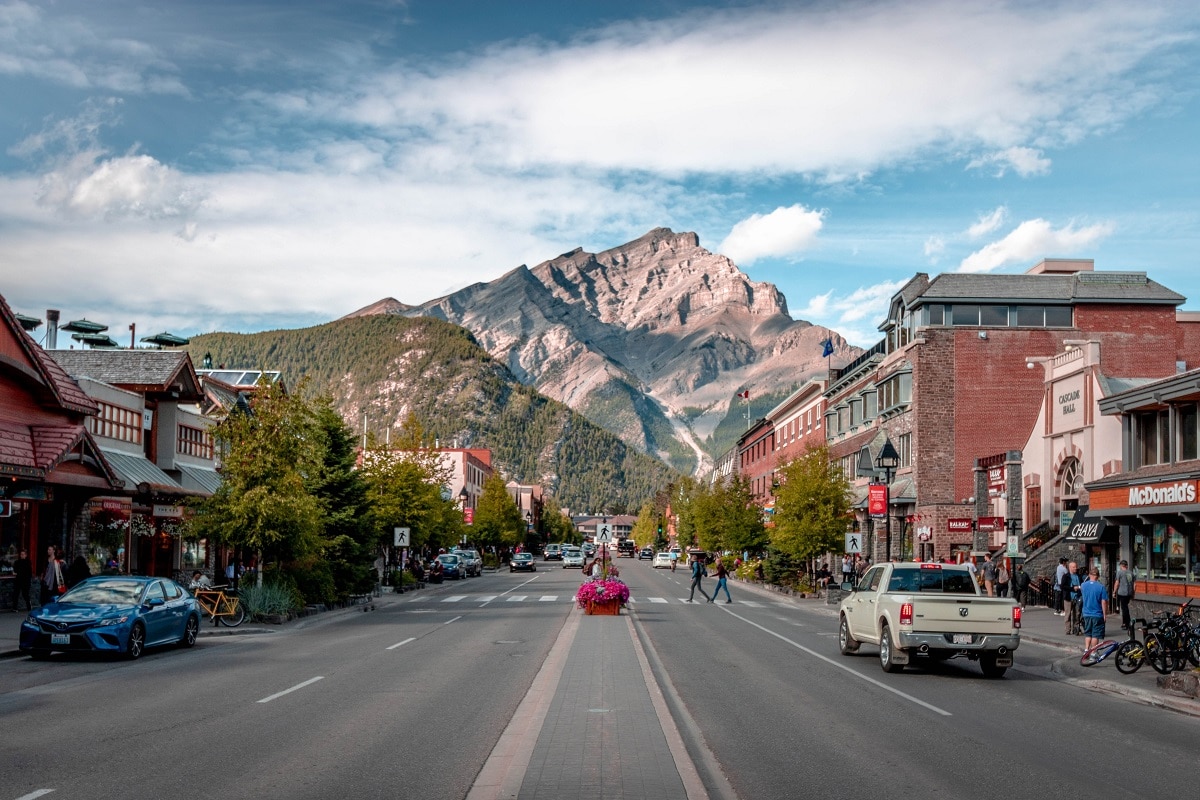
Average Home Price: CAD $950,000
Population: 8,500
Nestled in Banff National Park, Banff offers some of the most spectacular mountain scenery in the world. Its world-famous ski slopes, hot springs, and vibrant tourism-driven economy create a unique living experience.
Market Exclusivity and Pricing
The median house price in Banff is $950,000, with apartments averaging $550,000. The 2024 median home price for single-detached homes reached $1.67 million, while standard condos averaged $765,000. Properties spend an average of 32 days on the market, indicating strong demand.
Population and Demographics
Banff's current population is approximately 8,500, showing 3.7% growth from 2020. The town has limited expansion capacity due to national park boundaries and strict development regulations, which inherently constrain housing supply. The median household income is $75,143, above the national median of $67,000.
Investment Dynamics
While real estate prices are higher, the town's unmatched natural beauty, abundant amenities, and active outdoor lifestyle make Banff an aspirational choice for retirees and outdoor enthusiasts seeking an extraordinary home. The constrained supply and continuous tourism demand create strong investment potential, though buyers should be mindful of regulatory restrictions and seasonal market fluctuations.
Lifestyle Premium
Living in Banff provides unparalleled access to world-class skiing, hiking, and outdoor recreation within a UNESCO World Heritage site. The town offers sophisticated dining, shopping, and cultural amenities despite its small size, supported by millions of annual visitors.
1. Ayr, Ontario
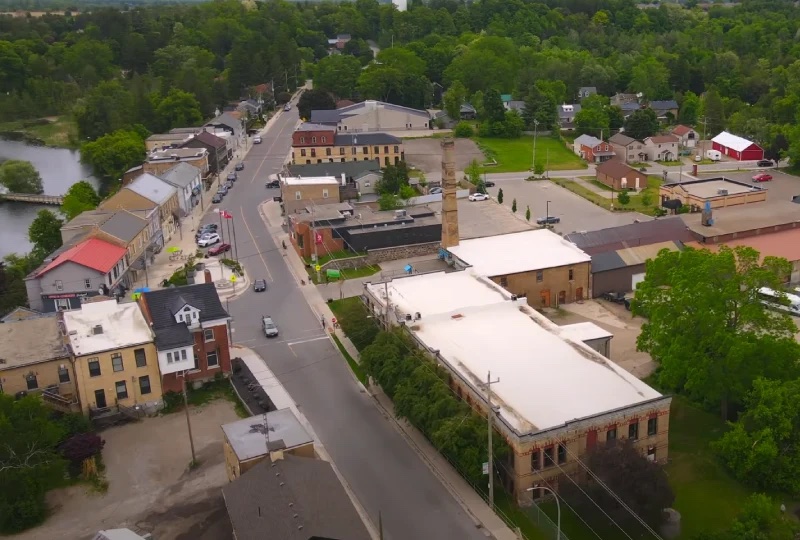
Average Home Price: CAD $675,000
Population: 5,383
Ayr is a charming small town known for its strong sense of community and historic roots. Surrounded by rolling farmlands and scenic countryside, it offers a tranquil lifestyle within easy reach of larger cities like Kitchener and Waterloo.
Demographic Profile and Growth
Ayr experienced significant population growth of 10.8% between 2016 and 2021, reaching 5,383 residents. The community has a young demographic profile, with an average age of 37.0 and a median age of 37.6. Notably, 22.5% of the population is under 14 years old, indicating strong family appeal.
Family-Oriented Community
The town shows strong family characteristics with 79% married couples and an average household size of 2.9. The homeownership rate is high, with 76% of dwellings being single-detached houses. This family-friendly environment is reflected in excellent local schools and community programs.
Economic Profile and Accessibility
The median total income in 2020 was $53,200, with after-tax income of $46,800. The average total income of $63,800 indicates a comfortable middle-class community. Ayr's strategic location provides easy access to major employment centers in Kitchener-Waterloo while maintaining affordable housing and rural tranquility.
Quality of Life Advantages
Ayr's affordable housing market, excellent schools, and family-friendly environment make it a top pick for those seeking peaceful living with modern conveniences nearby. The town maintains its agricultural heritage while providing modern amenities and services expected by today's residents.
Emerging Trends and Future Outlook
The Canadian small-town landscape is evolving rapidly due to several converging factors. Remote work normalization has permanently altered location decisions for many professionals. The pandemic demonstrated that productivity can be maintained outside traditional office environments, leading to sustained interest in smaller communities offering better quality of life at lower costs.
Demographic shifts are also reshaping these communities. Canada's aging population will see 5 million retirees between 2024 and 2030, with many seeking communities that offer healthcare access, recreational opportunities, and lower living costs. Simultaneously, younger families are discovering the benefits of small-town living, particularly for child-rearing.
Infrastructure development in rural and small-town Canada continues to improve, with enhanced internet connectivity enabling remote work and digital services. This technological advancement reduces the traditional disadvantages of rural living while preserving the lifestyle benefits.
Housing market dynamics reflect these trends, with continued price appreciation in desirable small towns, though generally at more moderate rates than major urban centers. The migration from expensive urban markets to affordable small towns is expected to continue, supported by lifestyle preferences and economic factors.
Conclusion
These ten beautiful Canadian towns represent diverse options for those seeking an enhanced quality of life, whether for retirement or family living. Each community offers unique advantages, from coastal charm and mountain vistas to cultural richness and economic opportunity. The post-pandemic migration trends toward smaller communities have validated the appeal of these destinations, combining natural beauty with modern amenities and strong community bonds.
As remote work becomes more prevalent and housing costs in major cities continue rising, these towns are positioned to attract growing numbers of residents seeking the quintessential Canadian lifestyle. Whether you prioritize outdoor recreation, cultural activities, affordability, or community connection, Canada's beautiful small towns offer compelling alternatives to urban living while maintaining access to essential services and amenities.
The key to successful relocation lies in matching personal priorities with community characteristics, considering factors such as climate preferences, recreational interests, proximity to healthcare and family, and long-term housing market trends. These ten towns represent the best of what small-town Canada offers: natural beauty, community spirit, and quality of life that makes Canada one of the world's most desirable places to live and retire.
